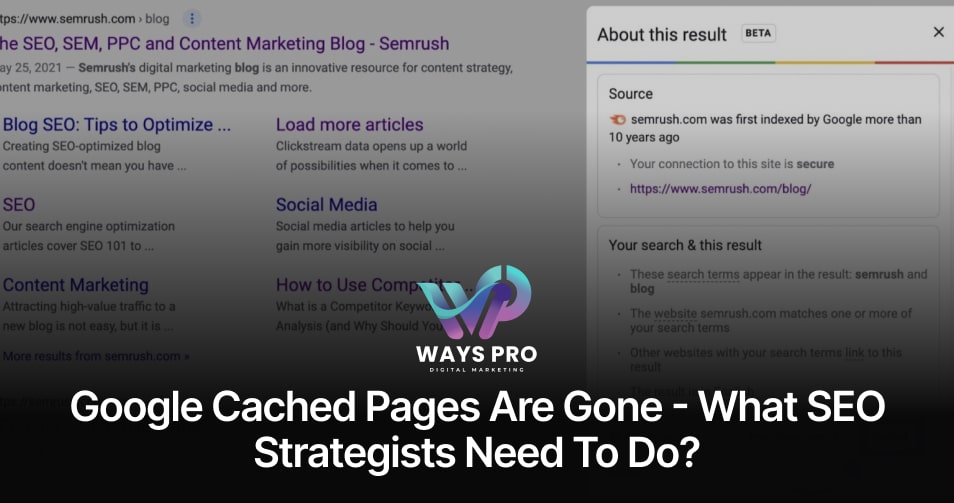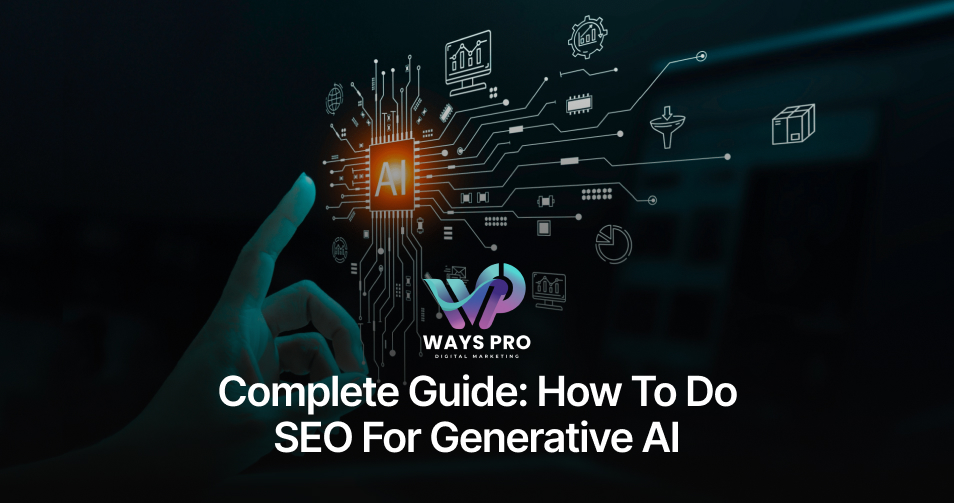Until the end of 2023, your websites were in safe hands, so you did not need to worry much whenever they were temporarily slow or down. Those were good days when the Google Cached pages were always there while your website suffered from taking a snapshot of your website and keeping it ready to load on users’ screens.
But everything went upside down when people started raising queries over the internet that they could not access cached pages from Google search results.
Finally, Google SearchLiaison broke the ice by tweeting that Google Cached Pages are gone and expressing their thoughts on adjusting the situation with the Internet Archive (Archive.org Cache). However, this hindered SEO strategists and their work.
Therefore, we’re here with this helpful guide to tell SEO strategists what to do when they lose a valuable tool for analyzing historical page content and identifying changes in competitor tactics that impact strategic adjustments.
What are Google Cached Pages?
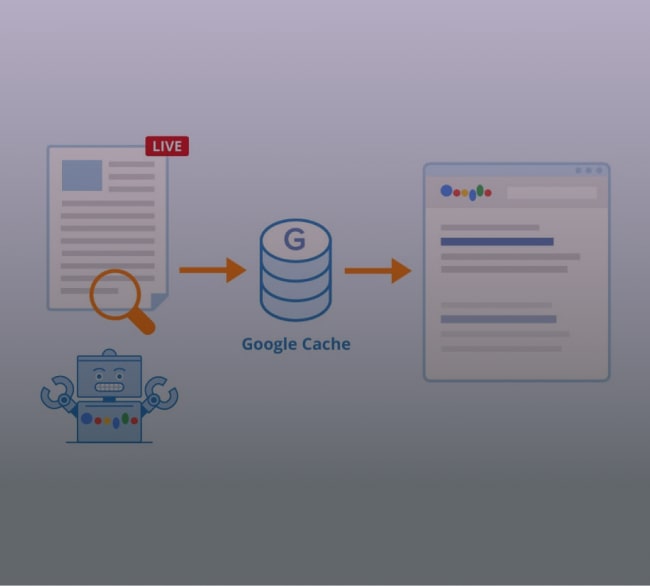
Google Cached Pages are the digital snapshots of the contents on a specific webpage. In every visit to the page after a certain interval, the Google crawler takes a snapshot of the website and keeps it as the cached copy. The cached copies of the content are available to the users to serve as a backup in case the original website is down due to maintenance, technical reasons, or simply if the content is taken down.
Unfortunately, our journey with valuable features ended.
Let’s look at where this feature came from and how it added value to SEOs’ work.
What Were Google Cached Pages?
Google Cached Pages were initiated to hold ‘snapshots’ of webpages Google’s crawlers collected every so often. When they came out in the early 2000s, these cached pages were a powerful weapon for SEO strategists. They became invaluable backup copies, as some pages were temporarily unavailable. Later, cached pages became a staple for SEOs to check how content looked for search engines, see if pages were updated, and solve indexing problems.
SEO specialists could monitor changes affecting rankings by comparing the cached versions to see which exact version of the site was ranked. This also allowed the SEOs to examine their competitors’ content strategy, ensuring their pages showed up correctly to the search engines, performed better, and gave a better user experience. SEOs could see how Google viewed their page via cached pages to help them optimize their techniques.
But what’s the actual story behind its closure?
The Discontinuation of Access to Google Cached Pages
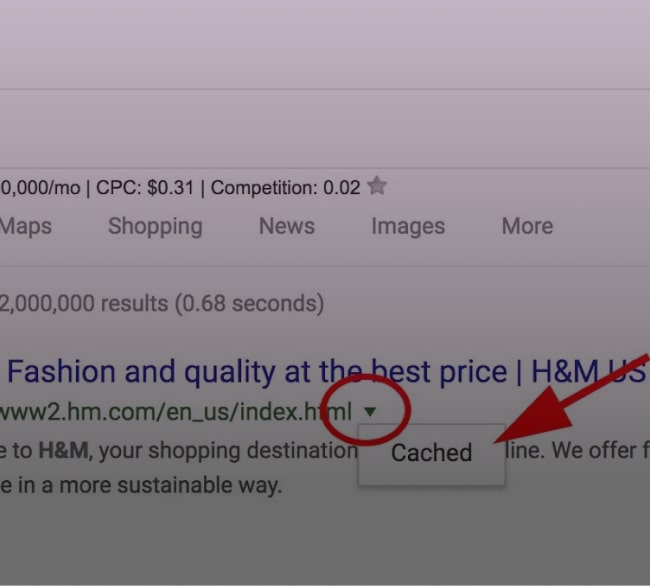
Google Cached Pages ceased to exist as a feature, which is bound to happen for some valid reasons.
- First, experts recommended that Google’s growing emphasis may have informed the decision on the privacy area and data quality.
- Republishing old versions of the web content was perceived as presenting outdated information and eroded users’ trust.
- Another possible reason is that Google now relies on periodic updating of its algorithms and machine learning models, which does this more effectively than caching.
- Some industry specialists attribute the pullout to Google’s interest in minimizing resources.
- Maintaining cached pages for billions of sites is resource-intensive.
- In the rapidly evolving web environment, users and SEOs should rely on current page data, as Google prefers real-time content for its relevance.
The reasons might sound valid, but the consequences still impact both SEO strategists and website owners.
Impact of Discontinuing Access to Google Cached Pages
Loss of Benchmarking Tool:
SEO strategists lose an easy way to compare past content updates and monitor historical changes in SERP rankings.
Reduced Error Diagnosis:
Additionally, when you do not have cached pages, troubleshooting recent issues related to indexing or how algorithms have been impacted becomes more difficult.
Limited Competitor Insights:
Not having cached competitor content means competitive analysis becomes less effective.
Decreased Content Backup:
This is because, with cached pages, if mistakenly deleted content is saved to a temporary location as a backup, recovery becomes trickier after accidental deletions.
Lower Visibility:
Cached pages that previously acted as alternative entrances to sites may only be available if sites have Google caching.
User Experience Loss:
Visitors now have more hurdles to clear when bouncing due to cached versions, faster load times, or bypassing server errors.
Why Might You Want to View Google Cached Pages?
You need to view Google cached pages to get information from a currently unavailable website, when the site’s content was recently changed, or when you need to compare the differences between the sites’ versions.
But How? – When Google Cached pages are gone.
Alternatives to Google Cached Pages
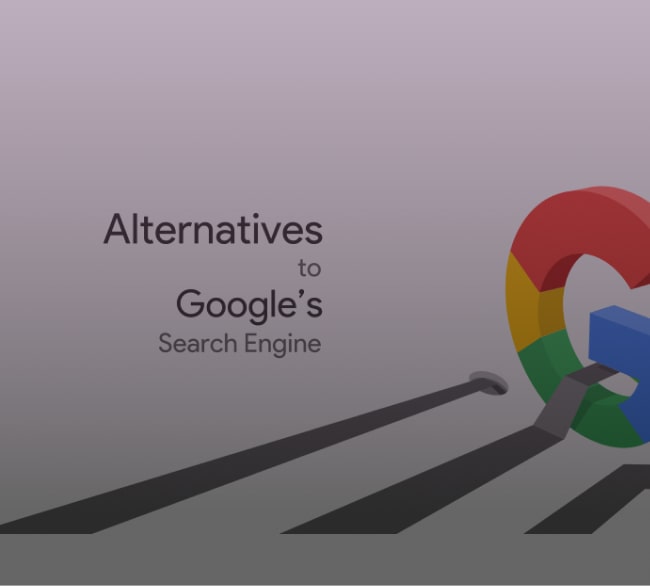
If you want to view the track record of changes to any website, you can easily do so using the following methods.
It can also be useful for retrieving information if the original page was deleted or hash as restricted access, indicating its usefulness regarding stable data access.
(For example, you want to view Facebook’s cache page.)
Wayback Machine: Use the Wayback Machine to view cached versions of web pages, often with multiple snapshots over time.
Personal Cache: Create a personal archive of key web pages by saving them offline (Ctrl+S on Windows or Command+S on Mac), or use Chrome extensions for easy archiving.
Chrome Extensions: Use extensions like ‘Web Cache Viewer’ to quickly see cached copies of pages from various archives.
Local Browser Cache: With the browser’s history, access to the previously visited pages with a local copy is also available.
Google Cached Pages were an absolute benefit for website owners – let’s see how:
The Importance of Google-Cached Pages to Website Owners
Imagine the main server of your website, which provides product details when just placing an order, which goes down. The impact would be minimized because the user would see product details by accessing the cached page.
Here are more factors that make Google Cache Pages important for Website Owners.
Backup Access: Cached pages supplemented a view when a site was unavailable, allowing users to access information.
Error Diagnostics: This feature allows website owne cached and real websites real websites to identify and solve technical problems that may affect visitors’ experience.
Content Consistency: Cached copies enable confirmation that updates or changes are displayed exactly as they were for users and search engines.
SEO Performance Tracking: This service helps site owners understand how Google crawls and indexes their pages, which is important in the optimization process.
Best Practices for Webmasters in a Post-Google-Cache Era

It’s the post-GOOGLE-CACHE era. Web admins need to adopt best practices in today’s digital landscape, where downtime can mean lost traffic and diminished trust.
These proactive steps will keep your content safe and strengthen your relationship with your audience.
- Maintain Regular Backups
- Implement a Content Delivery Network (CDN)
- Use Wayback Machine
- Enhance Site Reliability
- Create a Resource Archive
How to Prevent Caching
Use Cache-Control Headers (no-store or no-cache):
Add a cache-control HTTP header in your server response code. We can give browsers “no-store” or “no-cache” directives to instruct them not to store the cached version of the page.
Set Expiration Dates (Expires header):
You can control how long a browser keeps a copy of a resource by setting the expiration time short. Use the Expires header to set a specific date and time so that old content isn’t served.
Dynamic Content:
If your page frequently changes, you might want to use server-side rendering or dynamic content generation. This way, users receive the most recent version directly from the server.
Query Strings:
They are the URLs of frequently updated resources such as images, and scripts are appended with append query strings. It generates a different URL for each version without allowing browsers to use cache to access the page.
Meta Tags (<meta http-equiv=”Cache-Control” content=”no-cache”>):
Employ HTML meta tags so the current page is not cached in a user’s web browser. This gives extra protection, especially to HTML pages, because it validates the content before producing the next page.
No Google Cached Pages? No Problem
Google cached pages vanished, which is disturbing, but there are other methods of accessing past copies or versions of websites.
Tools such as Wayback Machine allow you to examine pasties of websites to capture useful information from different times.
Also, it is possible to bookmark important pages and save localized copies to have easy and fast access.
Employing browser extensions lets you capture and save web content, ensuring you always have access to the website’s past versions.
However, Google cached pages no longer exist, so adopting these alternatives can help keep your digital assets intact.
The Future of Web Content Preservation
Web content preservation will continue changing to meet new users and business requirements as time passes. Decentralized storage solutions, particularly blockchain applications, can provide safe, unamendable storage for content and its background information.
Furthermore, with the help of AI, it may be possible to automate the archiving processes and, therefore, store and sort all important information more effectively. As more content moves online, the practice of implementing innovative approaches to preserve web archives will become essential.
Final Thoughts
- Google has discontinued Google cached pages, which is a huge change for SEO strategists and website owners.
- This change may not feel like a win; rather, it indulged us in the struggle of exploring new creative techniques to preserve web content.
- However, we can adapt to it through tools such as the Wayback Machine, best practices in content management, and browser features.
- Focusing on dynamic content and user engagement ensures your audience can always access the latest information.
Dear SEOs,
- Also, remember that adaptability is key to surviving through the change. And you’ll make your way through this change by trying new strategies!

